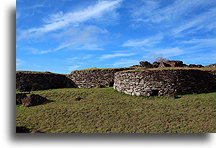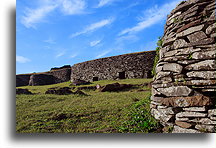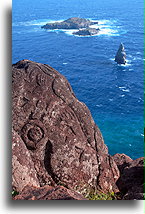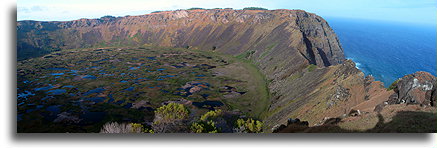
On the rim of Rano Kau caldera, there are stone dwellings of the Orongo Village. This was a very important ceremonial place used only for a few weeks during a year. In the beginning of spring the Tangata Manu competition was held here. Orongo is also the main site of rock art on Easter Island with hundreds of petroglyphs.


Starting in the second half of the 17th century, changes in society on Rapa Nui caused the process of destruction of moai (statues) and triggered revisions in the islanders beliefs. The Make Make god, related to fertility, spring and migratory seabirds replaced the cult of ancestors. Tangata Manu, closely related to Make Make, was an annual ritual where chiefs of different clans or their representatives competed to obtain the seasons first egg of Manatura (seabird). Every spring, migratory birds arrive to nest on three offshore islets. Near that time competitors were arriving from different parts of the island to Orongo, where various events were carried in preparation to the actual race. Participants went down a steep cliff and swam to Motu Nui, the biggest of three offshore islets, staying there for days or even weeks waiting for seabirds to arrive and nest the first egg. The first of competitors who returned to Orongo swimming and climbing up the cliff with the unbroken egg, earned a big honor for himself and his clan. The winner himself or his chief was endowed as "birdman" (Tangata Manu) and was sacred. He ruled the whole island and lived in ceremonial reclusion for the whole following year. The last of such competitions took place around 1867 and was noted by missionaries. The remainder of Easter Islands culture not already destroyed by the islanders themselves was exterminated out by the outside world.






